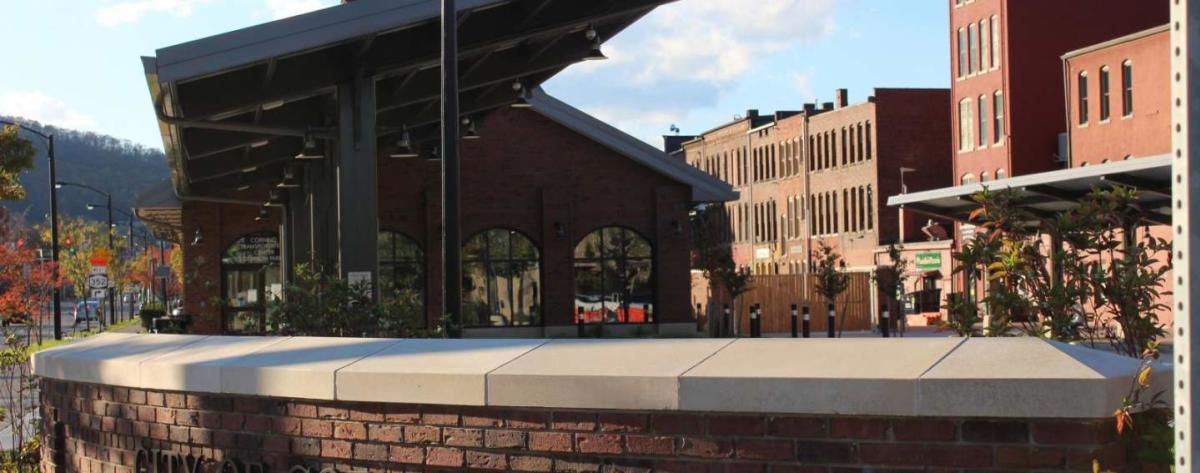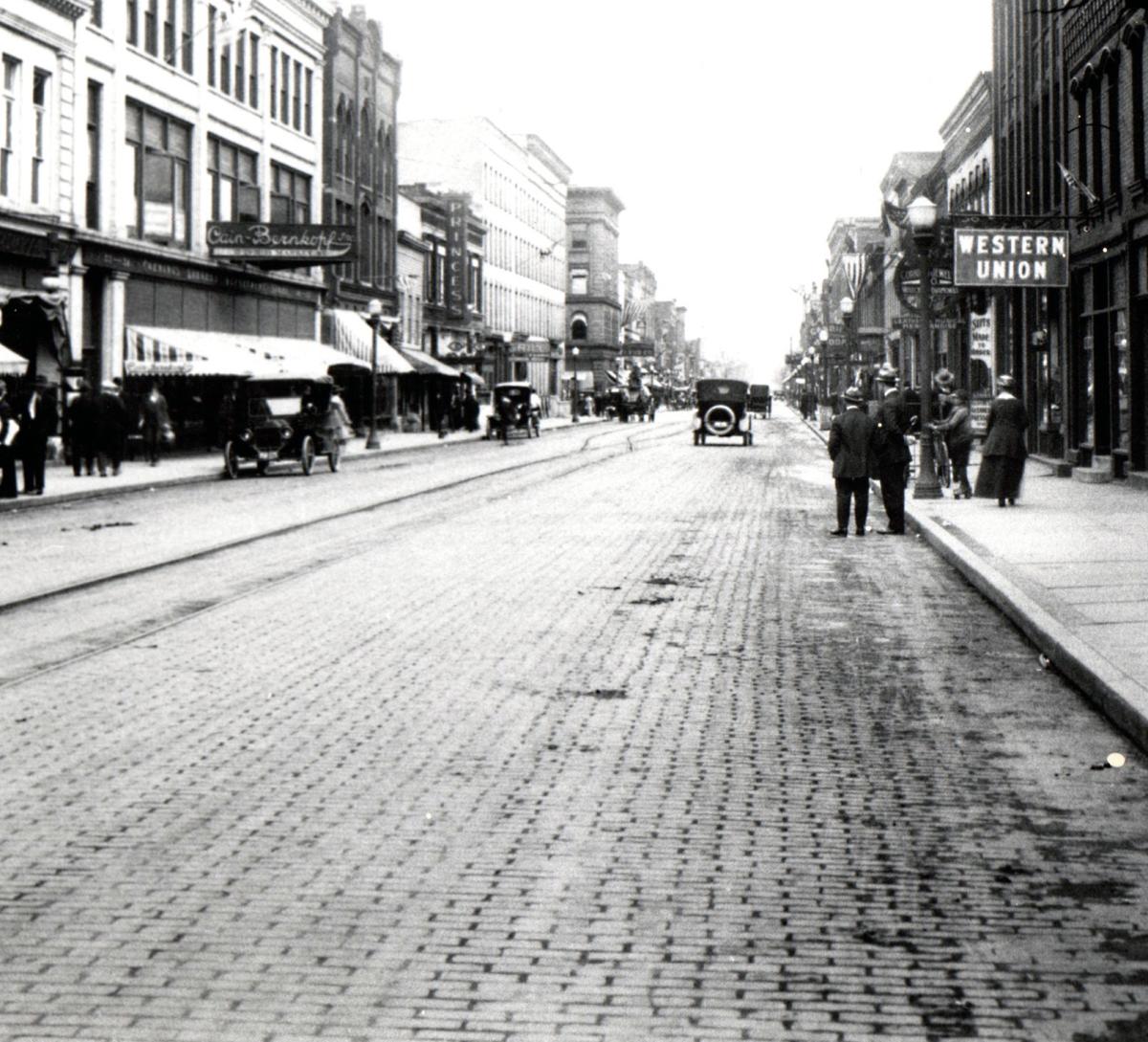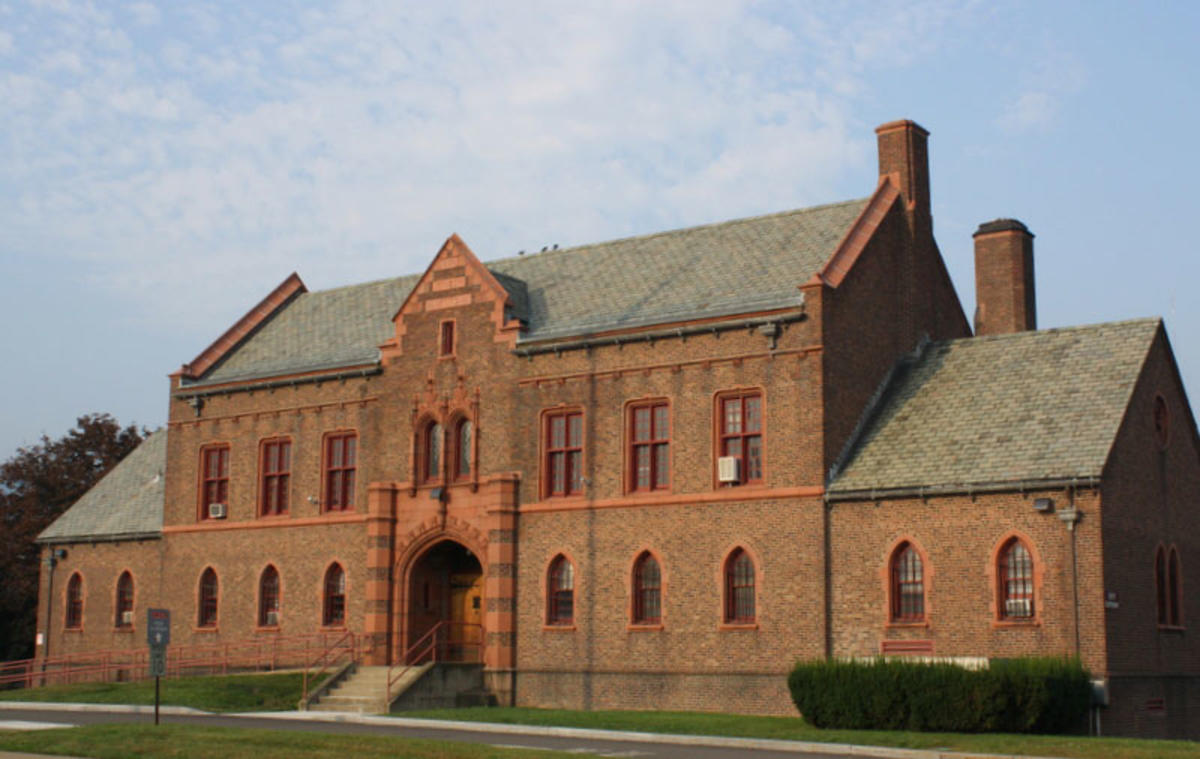Hey, my name is Kristen, and I am kind of a geek when it comes to history in downtown Corning.
When you think of famous historical cities, I bet you think of Athens, Rome, and even Boston. Well, I invite you to a walk around Corning's Gaffer District. You'll get the feeling that hidden historical treasures are lying await with each step! Let me share some of the little-known historical facts and treasures in our downtown that you won't find on our Buildings Alive Tour.

Corning is fortunate to have our own Transportation Center located on Denison Parkway. With a combined bus station, print center, and UPS store, you know you will eventually have to stop here!
If you were searching for transportation 200 years ago, you would have traveled by stagecoach. One of the main stagecoach lines ran from Big Flats to Bath, providing travel between the communities. In their heyday, stagecoach lines were a large-scale enterprise and a source of livelihood for a small town. The introduction of this mode of travel was the impetus for the eastern seaboard to become accessible—and better informed—in the decades before the telegraph when travel and communication were one and the same.
Speaking of transportation, as you make your way through the downtown in the 21st century, you'll likely spot the Corning Museum of Glass shuttle buses. These buses circle the downtown from the museum's north lot just off Exit 46 on I-86 to the Rockwell Museum at 111 Cedar Street, to a stop at 1 East Market Street. The museum shuttles are an excellent no-charge way to travel in the Gaffer District - hop on at one spot and hop off where you want to go next.

In 1840 when the Blossburg railroad came to Corning, they managed the transportation line out of a small wooden shack at the corner of Tioga and Pine Streets, where our Public Parking Garage stands today. The railroad brought about a spurt of building and prosperity in downtown Corning. One of those businesses was the Dickinson House, which was demolished and replaced by the Baron Steuben Hotel. The Baron Steuben Hotel, named after the American Revolutionary war hero Friedrich Wilhelm von Steuben (for which Steuben County is named), finally closed its doors in 1974. Take a look at the picture above, and you will see the Baron building on the left just beyond the Princess Theater. Today the building is home to Old World Cafe. If you're in the mood for homemade soups, pie, and stuffed-to-the-brim sandwiches, I recommend you stop and look at this building's magnificent preservation efforts.

The first Corning settlers, the Andastes tribe, came to the area as early as 1620 and situated their village on the banks of the Chemung River. Looking for the best view of the Chemung river? The best vantage point I have found to enjoy our river's beauty is taking a walk on the award-winning Centerway Walking Bridge.
Insider tip - don't miss the sunset and sunrise for your social media shots -- they are stunning!
 The first thing you'll see on your left when you cross over the bridge to the Northside of the Gaffer District is the Corning Family YMCA's home. Prior to becoming the home to the YMCA, this building housed the local New York State National Guard unit. Here's a little trivia for you. The magnificent double-door recessed entrance is called a sally port. This type of entrance provided the National Guard soldiers a way to secure and control entry into the building. Now store that info away for the next time you watch Jeopardy.
The first thing you'll see on your left when you cross over the bridge to the Northside of the Gaffer District is the Corning Family YMCA's home. Prior to becoming the home to the YMCA, this building housed the local New York State National Guard unit. Here's a little trivia for you. The magnificent double-door recessed entrance is called a sally port. This type of entrance provided the National Guard soldiers a way to secure and control entry into the building. Now store that info away for the next time you watch Jeopardy.

Although the sidewalks on our District's Northside are not terra-cotta brick, like its sister side to the south, this side of the river is ironically where many of our brick building materials were manufactured. Charles A. Rubright created the Corning Brick Works in 1878. Rubright was born in Germany and was a Civil War veteran and survivor of the Andersonville prisoner of war camp. Albright's Corning Brick Works also produced architectural terra cotta and ornamental brick, which I will shamelessly use to transition to the subject of public art in Corning. This map identifies nearly 100 pieces of art throughout the City of Corning, from sculpture and murals to memorials and architecture. Find out which work inspires your "I have to take a picture of this" street art moments.

Whether you traveled to Corning or you're a native, then you know that our town name is synonymous with glass. So, you can't miss a trip to the Corning Museum of Glass.
Every time I visit the museum, I continue to be surprised and enlightened by something I missed on my last trip through the galleries. It's not just beautiful glass pieces; there's a rich history within these walls - from works created 3,500 years ago to glass made the day of your visit to the Hot Glass Show. So, this next item is less history and more current events. Did you know that the Corning Museum of Glass was a part of the making and a feature of the Netflix reality glassblowing competition series, Blown Away?